By Kristin Sample-Lord, PhD, PE — The year 2022 began with a transformative start for the geosynthetics community. The North American Chapter of the International Geosynthetic Society (IGS-NA) joined forces with the ASTM International Committee D35 on Geosynthetics and the Geosynthetic Institute (GSI) to launch a new student fellowship program.
The Testing Innovation Fellowship Program is truly unique, as it is specifically targeted at (1) transitioning geosynthetics-related research to ASTM standards, and (2) increasing student and young member engagement in geosynthetic professional organizations. The program aligns with the combined missions of GSI, IGS-NA, and ASTM to develop and transfer knowledge, geosynthetic technologies, and testing standards to positively impact education, public health and safety, consumer confidence, and overall quality of life.
The details of the fellowship program are summarized in Figure 1. Fellows are awarded $500 per year, over a maximum three-year period ($1,500 total per fellow). Between three to five fellows are supported concurrently in any given year. Both IGS-NA and ASTM offer free student memberships, and the fellows must become student members to be eligible for the program.
As a deliverable of the fellowship, students must prepare a draft of either a new ASTM standard or a substantially revised version of an existing standard.
Want to join IGS North America as a student? Simply fill out this short form.
To guide the students through the standardization process, each fellow is strategically paired with a D35 committee mentor with expertise in the research topic area (Figure 2). In addition to supporting the success of the fellow, this mentorship aspect of the program also provides valuable networking and professional development opportunities for the students. Fostering meaningful and extended (i.e., 3-year) engagement with the students is expected, to lead to future young members of IGS-NA and ASTM International that are invested in the future of the organizations. For the mentors, they can meaningfully engage with young members (and potential future colleagues) and stay abreast of the latest developments in geosynthetics research.
This past January, the 2022 student recipients kicked off their fellowships by presenting their proposed work to ASTM D35, IGS-NA, and GSI members at ASTM Committee Week. The excitement surrounding the new fellowship program was palpable, and all three organizations are looking forward to continuing to support and grow the program.
“We are very proud of the GSI / IGS-NA / ASTM Testing Innovation Fellowship award,” says Dr. Koerner. “Mentors are helping graduate students grow and develop in the Geosynthetic profession through this award. We want them to learn the ropes at ASTM and network with the IGS membership during the process. In addition, we want them to receive guidance as well as being seen and heard in a very hands-on, positive and important role of standards development. Finally, we would like to have them gain support from stakeholders in our industry so that they are comfortable growing within the profession.”
The Fellowship Program has received strong support from across the profession. Notably, one of the field’s most significant contributors, Dr. JP Giroud, wrote the following:
The Testing Innovation Fellowship Program is a remarkable initiative and I would like to put in in the perspective of the geosynthetics discipline. Historically, the geosynthetics discipline has been developed around a family of products, the geosynthetics. The various types of geosynthetics have a variety of properties. These properties must be evaluated quantitatively because the geosynthetics discipline is an engineering discipline, and engineering is done with numbers. The numbers that quantify properties are generated by tests, and the numbers are reliable if the tests are performed in accordance with well-established procedures, hence the importance of standardization of the tests. Sometimes, it is hinted that standardization may stifle innovation. This should never happen to the geosynthetics discipline, because innovation is the engine that drives the geosynthetics discipline. Indeed, new types of geosynthetics appear periodically thanks to the vitality of the geosynthetics industry, and new materials, sometimes subtle additives, improve the performance of existing geosynthetics. These innovations generate a need for new tests or for modifications of existing tests. Clearly testing innovation must go with geosynthetic innovation. Therefore, I encourage students interested in geosynthetics to participate in the Testing Innovation Fellowship Program. By participating in this program, students will learn about geosynthetics and become active members of the geosynthetics discipline. In addition, students will bring the expertise that young generations have in the practice of digital technology, which is essential for testing innovation. Therefore, I can say that the Testing Innovation Fellowship Program is beneficial to both students and the geosynthetics discipline.
JP Giroud
Past President of the International Geosynthetics Society
Member of the US National Academy of Engineering
www.jpgiroud.com
The call for applications (and renewals) will typically occur in October each year. The fellowship program was developed, implemented, and is managed by the Fellowship Board, which includes Kristin Sample-Lord (IGS-NA Board Member), Kent von Maubeuge (D35 Sub-committee Chair), and George Koerner (GSI Director). There is also a financial sub-committee that steers financial management of the fellowship program, which includes John Allen (IGS-NA President), Gary Torosian (ASTM D35 Chair), and Jamie Koerner (GSI General Manager).
For further information about the program or how you can support the initiative, please contact info@igs-na.org
Kristin Sample-Lord, PhD, PE (Villanova University) is the IGS Vice President – University Outreach and co-chair of the 13th International Conference on Geosynthetics (13 ICG), which IGS North America will host in Montreal in September 2026.
This four-hour workshop is organized by the North American Chapter of the International Geosynthetics Society. It includes a happy hour reception and is open to all conference attendees. Additional fee applies. For more information, visit geosyntheticsconference.com/igs-na-workshop.
 UPDATE: The IGS North America has postponed Dr. Pluimer’s webinar to the Fall, due to chapter member and interested attendee requests. (It’s a busy work season!)
UPDATE: The IGS North America has postponed Dr. Pluimer’s webinar to the Fall, due to chapter member and interested attendee requests. (It’s a busy work season!)
We will keep you all posted here on the IGS-NA website for webinar updates and when the event will be rescheduled. We apologize for any inconveniences this may have caused.
Thank you again for supporting IGS-NA (NAGS) and the IGS.
For any questions about the webinar, please contact:
info@igs-na.org
(561) 768 9487
—————-
IGS North America Presents:
Introduction To Geopipe
Presented by Dr. Michael Pluimer, University of Minnesota – Duluth
Date: THIS WEBINAR IS BEING RESCHEDULED
Registration Cost:
$20.00* – IGS-NA Members | $20.00 – IGS-NA Student Members
$60.00 – IGS Members | $80.00 – Non-members
* IGS-NA Members receive one FREE webinar coupon on paying annual dues
EARN 1 PDH
Presenter: Dr. Michael Pluimer, University of Minnesota – Duluth
Introduction To Geopipe
In this webinar, Dr. Pluimer will open a series on applications, specifications, and test methods associated with geopipe. These polymeric pipe materials, commonly offered in corrugated and smooth varieties and a wide range of diameters and thicknesses, are essential to the success of modern infrastructures: water, wastewater, sewer, landfills, mining, residential and commercial development, utilities, etc. The session will detail types of geopipe (e.g., dual-wall pipe, polyethylene corrugated pipe, numerous other materials), raw material properties and resulting pipe properties, long-term durability, common specification requirements, and more. Essential engineering parameters such as stress cracking, oxidation resistance, UV degradation, and creep will be discussed.
Key Topics Include:
IGS North America’s Introduction To Geopipe Webinar is ideal for environmental engineers, infrastructure-owning agencies, design engineers, municipal engineers, regulators, general contractors, and other stakeholders.
Please send questions to info@IGS-NA.org or call +1 561 768 9487.
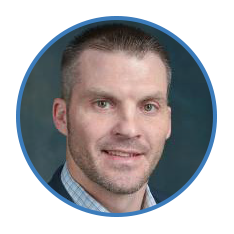 Presenter Bio: Michael Pluimer holds a PhD in Civil Engineering (2016) from Villanova University and a Master’s Degree in Mechanical Engineering (2002) from the University of Minnesota. His PhD research was on the performance of corrugated HDPE pipe manufactured with post-consumer recycled content in commuter railroad applications. Dr. Pluimer developed and validated a service life model for pipes in these applications relative to both the fatigue- and creep-related slow crack growth failure mechanisms. The service life model utilized ASTM F3181, the Un-notched Constant Ligament Stress (UCLS) test, a new test method developed for corrugated HDPE pipe materials containing recycled content.
Presenter Bio: Michael Pluimer holds a PhD in Civil Engineering (2016) from Villanova University and a Master’s Degree in Mechanical Engineering (2002) from the University of Minnesota. His PhD research was on the performance of corrugated HDPE pipe manufactured with post-consumer recycled content in commuter railroad applications. Dr. Pluimer developed and validated a service life model for pipes in these applications relative to both the fatigue- and creep-related slow crack growth failure mechanisms. The service life model utilized ASTM F3181, the Un-notched Constant Ligament Stress (UCLS) test, a new test method developed for corrugated HDPE pipe materials containing recycled content.
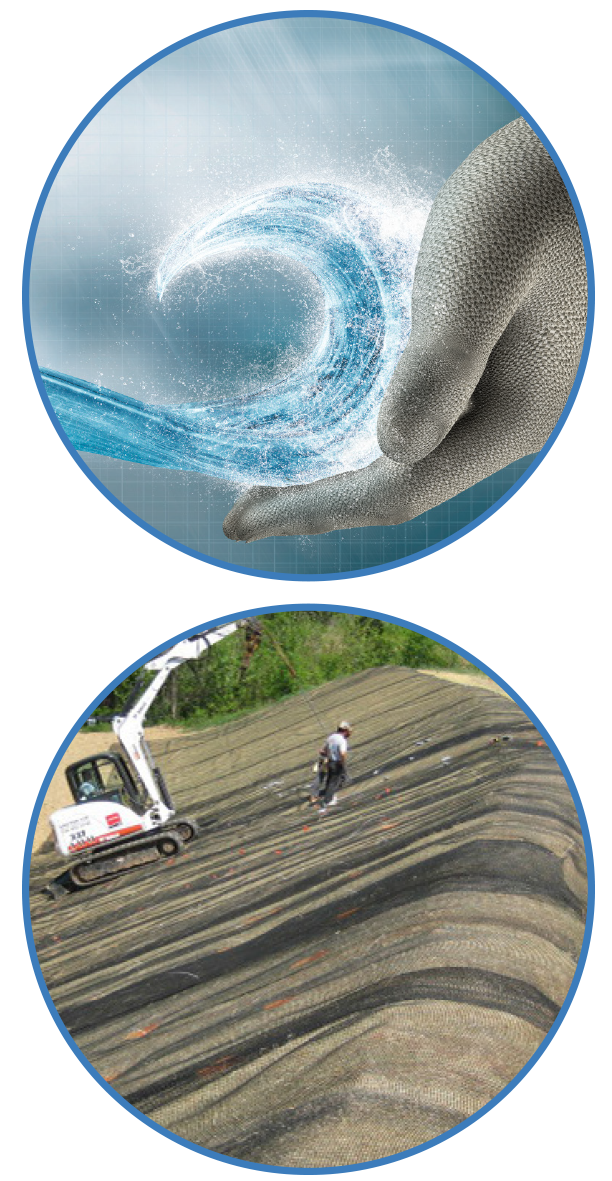 IGS North America Presents:
IGS North America Presents:
Erosion Control with Geosynthetics
Presented by Markus Wilke, HUESKER
Date: Tuesday, May 29, 2018 @ 1:00 – 2:30pm EDT (includes Q&A time)
Registration Cost:
$20.00* – IGS-NA Members | $80.00 – Non-members
* IGS-NA Members receive one FREE webinar coupon on paying annual dues
EARN 1 PDH
Presenter: Markus Wilke, HUESKER
REGISTER TODAYErosion Control with Geosynthetics
Erosion is a natural process, resulting from the interaction between water and soil. Unfortunately, this can cause severe damage to infrastructure and endanger people’s lives. Culverts, roads, bridge foundations, embankments, landfill slopes, MSE walls, and other critical pieces of infrastructure are susceptible. With greater urbanization occurring around the world and population centers swelling along coastlines and rivers, the collective need to better manage erosion threats has intensified.
Geosynthetics provide highly engineered solutions for solving all of these erosion problems.
DOWNLOAD EVENT PDFKey Topics Include:
IGS North America’s Erosion Control Webinar Series is ideal for environmental engineers, infrastructure-owning agencies, design engineers, municipal engineers, regulators, general contractors, and other stakeholders.
Interested participants can apply online. Please send questions to info@IGS-NA.org or call +1 561 768 9487.
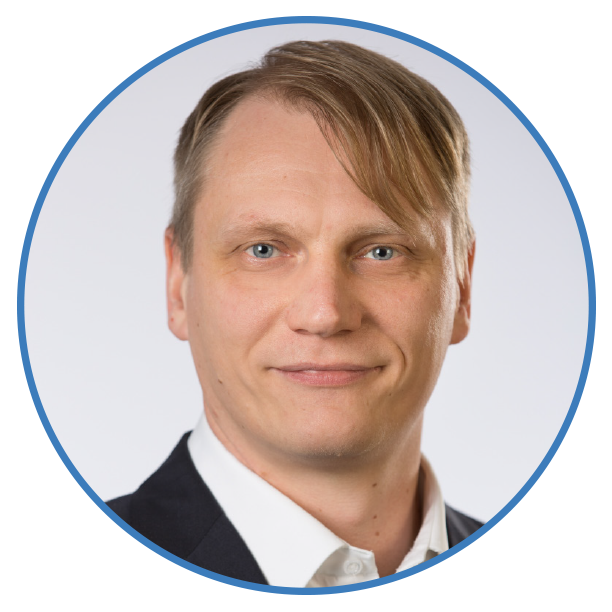 Presenter Bio: Markus Wilke is an engineer and business development manager with HUESKER, one of the world’s oldest and largest geosynthetic manufacturing and design engineering companies. Wilke brings more than a decade of experience to the presentation, including a very deep background in hydraulic engineering and coastal protection and remediation. He has published extensively on topics such as dewatering, port maintenance, bank stabilization, and waterway engineering.
Presenter Bio: Markus Wilke is an engineer and business development manager with HUESKER, one of the world’s oldest and largest geosynthetic manufacturing and design engineering companies. Wilke brings more than a decade of experience to the presentation, including a very deep background in hydraulic engineering and coastal protection and remediation. He has published extensively on topics such as dewatering, port maintenance, bank stabilization, and waterway engineering.
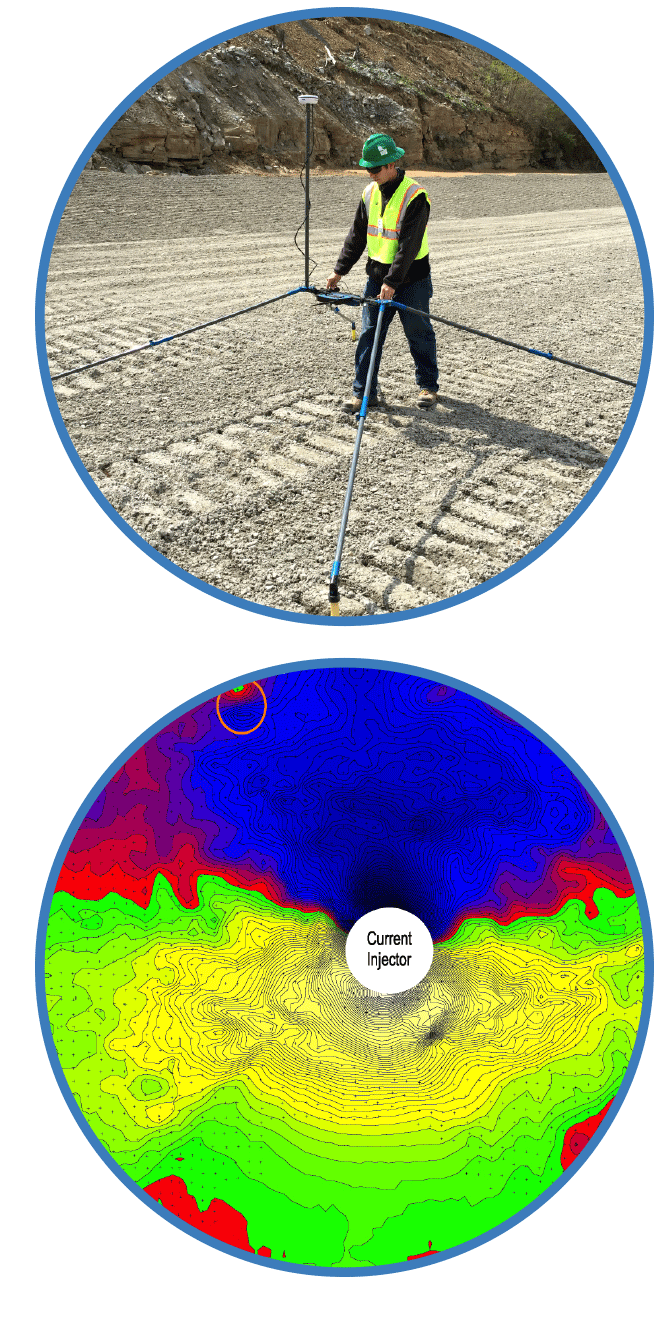 IGS North America Presents:
IGS North America Presents:
Electrical Leak Location Webinar Series
The Dipole Method (ASTM D7007): Advantages, Technique, and Necessary Site Conditions
Presented by Abigail Gilson, M.S., P.E.
Date: Tuesday, April 24, 2018 @ 1:00 – 2:30pm EDT (includes Q&A time)
Registration Cost:
$20.00* – IGS-NA Members | $80.00 – Non-members
* IGS-NA Members receive one FREE webinar coupon on paying annual dues
EARN 1 PDH
Presenter: Abigail Gilson, Director of TRI Environmental’s Liner Integrity Services
ABeck@TRI-ENV.com | +1 512 623 0511
The Dipole Method (ASTM D7007): Advantages, Technique, and Necessary Site Conditions
Among the various types of electrical leak location methodologies used to evaluate geosynthetic lining systems in the field, the dipole method has a unique distinction: it is the only ASTM standardized ELL practice that can locate damage to geomembranes caused during or after cover material placement. Dipole technology can locate very small damage points, such as pinholes or knife slices, under several feet of earthen material. It can even be applied to filled impoundments that are actively in service. As such, dipole surveys are a powerful tool for lined facility validation and protection; but, like any ELL methodology, it can be rendered ineffective if site boundary conditions are poor. In this webinar, Abigail Gilson-Beck, one of the leading experts on ELL, explains ASTM D7007 standardized procedures, including leak detection distance testing and the various methods of data analysis. The importance of good site boundary conditions is detailed with case studies. Earn 1 PDH at the conclusion of the first webinar.
DOWNLOAD EVENT PDFAttendees will learn about:
The Electrical Leak Location Series is ideal for design engineers, CQA firms, site owners, and regulators interested in specifying and employing this service.
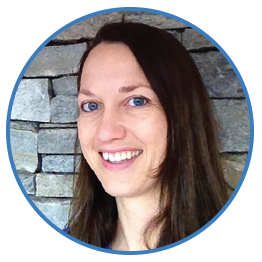 Presenter Bio: Abigail Gilson, M.S., P.E., is the Director of TRI Environmental’s Liner Integrity Services. She has a wealth of experience in geomembrane-lined containment facility design and construction and has performed electrical leak location surveys since 2004. As a graduate of TRI’s inaugural liner integrity class in 2003, her electrical leak location field experience has exceeded 100 projects and 110 million square feet. She has written and presented papers to industry conferences and taught short courses worldwide regarding the technical aspects of liner integrity and leak location surveys.
Presenter Bio: Abigail Gilson, M.S., P.E., is the Director of TRI Environmental’s Liner Integrity Services. She has a wealth of experience in geomembrane-lined containment facility design and construction and has performed electrical leak location surveys since 2004. As a graduate of TRI’s inaugural liner integrity class in 2003, her electrical leak location field experience has exceeded 100 projects and 110 million square feet. She has written and presented papers to industry conferences and taught short courses worldwide regarding the technical aspects of liner integrity and leak location surveys.
Ms. Gilson’s expertise is available for providing equipment, field training, classroom education, instructional presentations, engineering consulting, and liner integrity survey execution. She has trained staff in all of TRI’s office locations to provide local assistance on survey projects.
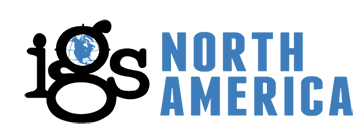 IGS North America Presents
IGS North America Presents
WEBINAR: Pond Liner System Design and Operation
Presented by Richard Thiel, P.E., President, Thiel Engineering
Tuesday, January 30, 2018 | 1:00 – 2:30 pm EST (includes Q&A time)
Registration Cost:
$20.00* – IGS-NA Members | $80.00 – Non-members
Earn 1 PDH
* IGS-NA Members receive one FREE webinar coupon on paying annual dues
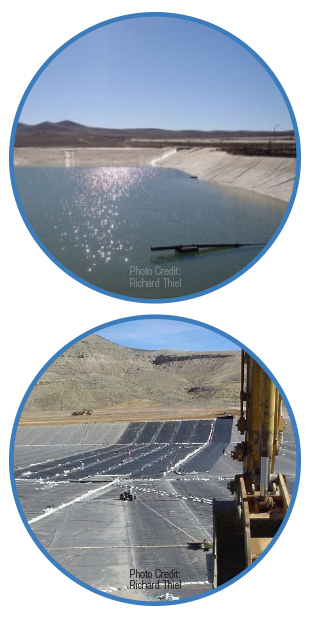 Though pond lining applications are common, the proper design and operation of pond lining systems requires great care. A large number of facilities in need of liquid containment are sensitive sites at which pond leakage could result in geotechnical failure of the embankments and subgrade, environmental damage, loss of valuable operational solutions or water, and disruption of operations. In this webinar, Richard Thiel, P.E., will share decades of insight into the proper design and operation of geosynthetic pond lining systems.
Though pond lining applications are common, the proper design and operation of pond lining systems requires great care. A large number of facilities in need of liquid containment are sensitive sites at which pond leakage could result in geotechnical failure of the embankments and subgrade, environmental damage, loss of valuable operational solutions or water, and disruption of operations. In this webinar, Richard Thiel, P.E., will share decades of insight into the proper design and operation of geosynthetic pond lining systems.
The engineering information in the session provides guidance and key considerations for those who work with potable water reservoirs, stormwater detention ponds, mining spoil containment sites, irrigation water storage, wastewater lagoons, food and industrial processing facility wastewater treatment ponds, hydrofracking containment ponds, pumped storage reservoirs, and more.
Attendees will learn about:
Participants will earn 1 PDH at the conclusion of this webinar.
Who Should Attend: Owners and operators of liquid containment facilities; contractors involved in lined pond construction and maintenance; and civil engineers, hydraulic engineers, water engineers, stormwater engineers, wastewater engineers, agricultural engineers, gas and oil extraction engineers; and mining engineers that design containment facilities.
 Presenter Bio: Richard Thiel, P.E., has more than 30 years of experience and specialization in containment design applications for geotechnical projects, waste containment, secondary containment of fuel, and leach mining applications. His work has involved extensive interaction with feasibility evaluations, design, permitting, design peer review, economic evaluations, failure analyses, and construction of waste facilities and surface impoundments. He is an expert in the design of liner systems with soils and geosynthetics, leachate management systems including pipelines and pump stations, geotechnical site reconnaissance and resource investigation programs, construction quality assurance (CQA), and assistance in developing state solid waste regulations.
Presenter Bio: Richard Thiel, P.E., has more than 30 years of experience and specialization in containment design applications for geotechnical projects, waste containment, secondary containment of fuel, and leach mining applications. His work has involved extensive interaction with feasibility evaluations, design, permitting, design peer review, economic evaluations, failure analyses, and construction of waste facilities and surface impoundments. He is an expert in the design of liner systems with soils and geosynthetics, leachate management systems including pipelines and pump stations, geotechnical site reconnaissance and resource investigation programs, construction quality assurance (CQA), and assistance in developing state solid waste regulations.
Please send all questions to info@IGS-NA.org or call +1 561 463 5868.
 IGS North America Presents
IGS North America Presents
WEBINAR: Understanding the Role of Minimum Average Roll Values (MARV) in Geosynthetic Specifications
Presented by Beth Wilbanks
Tuesday, December 19, 2017 | 1:00 – 2:00pm EST
Registration Cost: $20.00
FREE for IGS-NA Members!
Earn 1 PDH
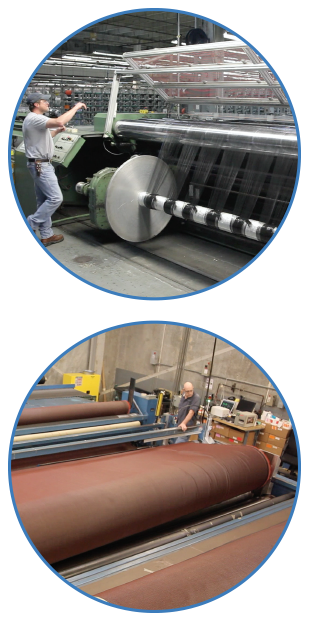 Understanding minimum average roll value (MARV) is essential in ensuring data support product requirements reported by the manufacturer. There appears to be confusion in the geosynthetic industry concerning the application and definition of product requirements particularly as they relate to MARV. MARV is a statistical value and not a ‘minimum’ number. The interpretation of these values has become an issue and actual data may not support a calculated MARV that meets or exceeds the published MARV.
Understanding minimum average roll value (MARV) is essential in ensuring data support product requirements reported by the manufacturer. There appears to be confusion in the geosynthetic industry concerning the application and definition of product requirements particularly as they relate to MARV. MARV is a statistical value and not a ‘minimum’ number. The interpretation of these values has become an issue and actual data may not support a calculated MARV that meets or exceeds the published MARV.
Attendees will learn about:
Participants will earn 1 PDH at the conclusion of this webinar.
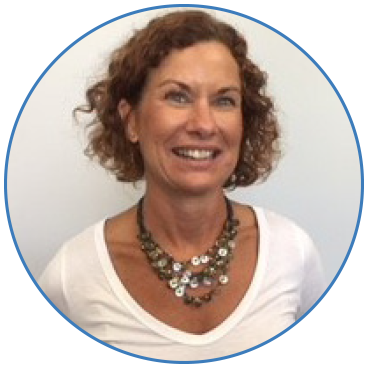 Presenter Bio: Beth Wilbanks has been with TenCate Geosynthetics for approximately 20 years. During most of that time she led the Quality department and was instrumental in achieving ISO 17025 laboratory and ISO 9001 quality management accreditation. Her current role at TenCate Geosynthetics is Director of Product Management. She is actively involved in ASTM Committee D35 on Geosynthetics and was recently recognized for her efforts in the development of D8102 Practice for Manufacturing Quality Control of Geotextiles. She continues to work in the quality area and has coauthored and presented a paper on the MARV topic and its impact on the geosynthetics industry.
Presenter Bio: Beth Wilbanks has been with TenCate Geosynthetics for approximately 20 years. During most of that time she led the Quality department and was instrumental in achieving ISO 17025 laboratory and ISO 9001 quality management accreditation. Her current role at TenCate Geosynthetics is Director of Product Management. She is actively involved in ASTM Committee D35 on Geosynthetics and was recently recognized for her efforts in the development of D8102 Practice for Manufacturing Quality Control of Geotextiles. She continues to work in the quality area and has coauthored and presented a paper on the MARV topic and its impact on the geosynthetics industry.
Please send all questions to info@IGS-NA.org or call +1 561 463 5868.
 IGS North America Presents:
IGS North America Presents:
Electrical Leak Location Webinar Series
Episode 1: Overview of Electrical Leak Location (ELL) Methods and Their Application
Presented by Abigail Gilson, M.S., P.E.
Date: Tuesday, November 21, 2017 @ 1:00 – 2:00pm EST
Registration Cost: FREE
EARN 1 PDH
Presenter: Abigail Gilson, Director of TRI Environmental’s Liner Integrity Services | ABeck@TRI-ENV.com | +1 512 623 0511
Overview of Electrical Leak Location (ELL) Methods and Their Application
All geomembrane-lined containment facilities should be tested for leaks before going into service. Early detection of leaks allows for swift and effective repair pre-service, protecting the engineer, contractor, owner and in many cases the environment. There are a variety of different methods available for electrical leak location. Choosing and specifying the most appropriate method requires an understanding of the technologies available: their benefits and limitations. In many applications an ELL method must be specified in the design phase, before construction starts, to ensure a successful test.
This presentation identifies the various common ELL technologies and identifies criteria which should be considered when specifying electrical leak location (ELL) methodology. Earn 1 PDH at the conclusion of the first webinar.
DOWNLOAD EVENT PDFAttendees will learn about:
 Presenter Bio: Abigail Gilson, M.S., P.E., is the Director of TRI Environmental’s Liner Integrity Services. She has a wealth of experience in geomembrane-lined containment facility design and construction and has performed electrical leak location surveys since 2004. As a graduate of TRI’s inaugural liner integrity class in 2003, her electrical leak location field experience has exceeded 100 projects and 110 million square feet. She has written and presented papers to industry conferences and taught short courses worldwide regarding the technical aspects of liner integrity and leak location surveys.
Presenter Bio: Abigail Gilson, M.S., P.E., is the Director of TRI Environmental’s Liner Integrity Services. She has a wealth of experience in geomembrane-lined containment facility design and construction and has performed electrical leak location surveys since 2004. As a graduate of TRI’s inaugural liner integrity class in 2003, her electrical leak location field experience has exceeded 100 projects and 110 million square feet. She has written and presented papers to industry conferences and taught short courses worldwide regarding the technical aspects of liner integrity and leak location surveys.
Ms. Gilson’s expertise is available for providing equipment, field training, classroom education, instructional presentations, engineering consulting, and liner integrity survey execution. She has trained staff in all of TRI’s office locations to provide local assistance on survey projects.
We believe EDUCATION is essential to attaining the appropriate and widespread use of geosynthetics as engineering materials. IGS-NA is dedicated to expanding the use of geosynthetics through education. To achieve this the IGS-NA is actively: training future users of geosynthetics, training geosynthetic educators, and promoting geosynthetics as part of engineering curricula.
To facilitate these educational goals we have two exciting programs:

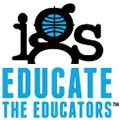 Educate the Educators | A Geosynthetics Training Program for University Professors
Educate the Educators | A Geosynthetics Training Program for University Professors
December 2017, Queen’s University, Kingston, Ontario, Canada
 We know that many undergraduate engineering programs completely lack geosynthetic instruction, often instructors may not have the knowledge, confidence or materials to effectively teach geosynthetics. In order to address this the IGS-NA offers Educate the Educators (EtE), a 2-day, funded program for University professors. EtE provides specialized, hands-on training and lecture materials to equip attending Professors with the tools they need offer effective geosynthetics course work in their engineering programs. Attending professors receive instruction, course materials (including power point presentations, hand outs and sample binders) and have continued access to the instructors as they develop their own programs at both the undergraduate and graduate levels. Building on the success of EtE Austin, held in 2015, participants will receive training and educational material on the fundamentals of geosynthetics as well as exposure to the state-of-knowledge on geosynthetics in reinforcement and environmental applications. This year approximately 35 Student-Professors will attend our second EtE event, to be held in Kingston, ON in December of 2017.
We know that many undergraduate engineering programs completely lack geosynthetic instruction, often instructors may not have the knowledge, confidence or materials to effectively teach geosynthetics. In order to address this the IGS-NA offers Educate the Educators (EtE), a 2-day, funded program for University professors. EtE provides specialized, hands-on training and lecture materials to equip attending Professors with the tools they need offer effective geosynthetics course work in their engineering programs. Attending professors receive instruction, course materials (including power point presentations, hand outs and sample binders) and have continued access to the instructors as they develop their own programs at both the undergraduate and graduate levels. Building on the success of EtE Austin, held in 2015, participants will receive training and educational material on the fundamentals of geosynthetics as well as exposure to the state-of-knowledge on geosynthetics in reinforcement and environmental applications. This year approximately 35 Student-Professors will attend our second EtE event, to be held in Kingston, ON in December of 2017.
We are very excited to have four exceptional educators and pioneering researchers as the EtE lead instructors: R. Kerry Rowe (Queen’s University), Richard J. Bathurst (Royal Military College of Canada) Richard Brachman (Queens University) and Jorge Zornberg (University of Texas Austin).
Educate the Students | A Guest Lecture Series for University Students
2017-18 School Year, on location as arranged
Educate the Educators is only part of the long-term strategy to train “future users” of geosynthetics. We also want to directly Educate the Students (EtS) by offer engaging and effective geosynthetic lectures which will immediately impact engineers-in-training. Lectures will be tailored to need of each program, and topics may range from fundamental to sophisticated. Particular focus will be made on large engineering schools. IGS-NA will support the development of the content and the costs associated with the transportation of the professors to/from the guest lectures.
In 2015 we hosted 45 EtE Student-Professors in August of 2016 we surveyed those professors, this is what we found…
40% of 2015 EtE Attendees’ University Programs contained NO Geosynthetic Content what so ever of those surveyed, 87% of those professors responded with a plan to incorporate the EtE programming at their institution.
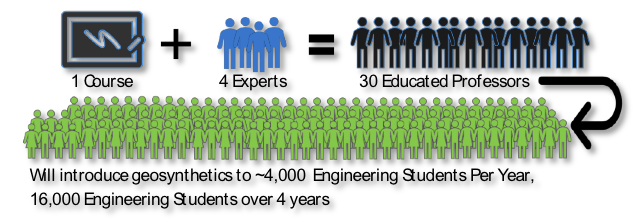 Of those …
Of those …
Of the 60% of the attendees whose course work already included some mention of geosynthetics 82% indicated that based on the EtE an increase in the geosynthetics content was incorporated for the 2015-16 academic year!
The budget for these two programs is $80,000 US. The IGS-NA is offering sponsorship programs in order to fund both projects. IGS-NA is seeking sponsors. If you or your company would like to consider supporting long-term quality growth of geosynthetics usage through sponsorship of either or both of these programs. Please don’t hesitate to call or write. Sponsorships available.
Thank you Current Sponsors!

Gold Sponsor $20,000 USD
Silver Sponsor $10,000 USD
Bronze Sponsor $ 5,000 USD
If you are interested in sponsorship or have additional questions please contact John Henderson, J.Henderson@TenCate.com< or call +1.706 693 1836.
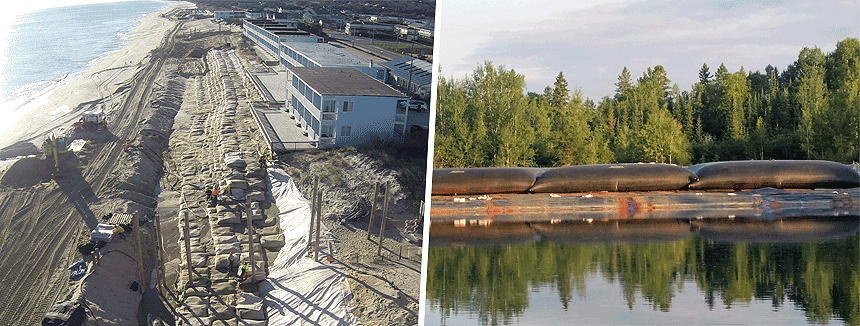
The International Geosynthetic Society (IGS) announces:
Geohydraulics in New Orleans LA
November 7 – 9, 2017
Two Separate Events to Support the Development and Implementation of Geohydraulic Technology
The International Geosynthetic Society (IGS) Technical Committee on Hydraulics will host a committee meeting and Think-Tank to discuss three emerging technical topics. This discussion will bring together some of the top-contributors in geohydraulics community to strategize about the path forward on each subject, including considerations of technical consensus vs continuing technical needs, educational efforts and potential publications. Selected individuals will be requested to serve as facilitators to foster discussion and interaction.
For event 2, there will be a two-day engineering seminar on state-of-practice design & construction for coastal and river protection in North America. Attendees at this course will be exposed to the range of technologies available to address hydraulic management. Instructors will address design: criteria, methods & codes – and provide guidance for the evaluation of product performance and selection. Attendees will receive 16 PDH or 2 CEUs.
EVENT 1 – Geohydraulic Experts’ Think-Tank & Committee Meeting
Renaissance Pere Marquette New Orleans – November 7, 2017
$100/person
EVENT 2 — Geohydraulics I – Geosynthetics for Coastal & River Protection
Renaissance Pere Marquette New Orleans – November 8 – 9, 2017
Costs: $650 Member | $670 Non-Member
Presented by: The International Geosynthetics Society, Technical Committee on Hydraulics.
Learn more about the IGS-TCH Hydraulics Week.
Exhibit And Sponsor Opportunities are also available.
REGISTER TODAY